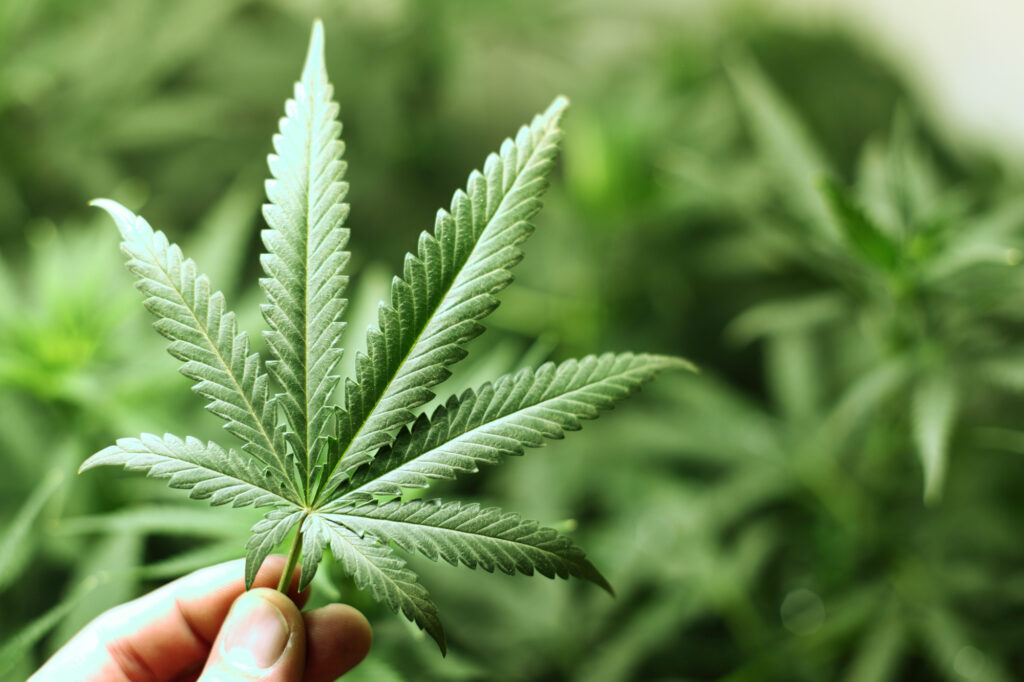Part I: Prehistory to The Classical Era
Earliest Human Drug Use: Archaeological Evidence
Evidence confirming human drug use dates back further than most of us realize. While written documentation from the Pre-Classical (2,000 B.C.E – 1,000 B.C.E.) and Classical (1,000 B.C.E – 500 C.E) periods conclusively verify the use of opium, cannabis, alcohol, tobacco, and various forms of fungi for religious, medicinal, and occasionally recreational purposes, discoveries in the past decade reveal the presence of psychoactive – commonly known as mind-altering – substances in the human archaeological record long before the practice of written record-keeping. Research published in 2014 by Elisa Guerra-Doce, a professor of Archaeology and Prehistory at the University of Valladolid in Spain, examines the presence of what modern humans would call intoxicants in four distinct archeological spaces:
- Fossilized plants and seeds found alongside human remains
- Residues of alcoholic beverages on artifacts such as pottery
- Psychoactive alkaloids in human skeletal remains
- Artistic renderings of drinking scenes and ritualized use of hallucinogens
These fossils, relics, and chemical traces date back as early as the Neolithic Period (12,000 – 2,000 B.C.E.). Contemporary scientific methods show the presence of poppy seeds stuck between human teeth, burnt cannabis seeds in ceremonial bowls, alcohol residue on ceramic drinking vessels, and abstract art thought to illustrate the use of hallucinogenic mushrooms in sacred rituals. Peyote buttons containing psychoactive alkaloids found in Neolithic sites in the Rio Grande in present-day Texas, and cocaine metabolites found in mummies in the South American Andes Mountains in present-day Chile further confirm the use of drugs by prehistoric humans for ritualistic purposes.

New Evidence: Neolithic Elites
In the 1950s and 60s, the discovery of pollen produced by medicinal flowers and herbs at a 58,000-year-old Neanderthal gravesite in Shanidar – present-day Iraq/Kurdistan – led to a flurry of articles and reports in mainstream media outlets claiming our evolutionary forebears had a sophisticated knowledge of the pharmaceutical properties of these plants. However, subsequent research concluded their presence alone at burial sites constitutes neither proof of medical knowledge nor evidence of their practical use. Some archaeologists question the provenance of the medicinal herbs, proposing they could have found their way into the gravesites by a variety of non-human mechanisms, while others point to a lack of corroborating data to support the conclusion that Neanderthals did, indeed, possess the wherewithal to use plants for healing purposes.
Guerra-Doce doubts the validity of the Shanidar evidence, yet stakes a positive claim on the Neolithic data. In a May 2014 interview with NBC news, she states:
“It is generally thought that mind-altering substances, or at least drugs, are a modern-day issue, but if we look at the archaeological record of prehistoric Europe, there are many data supporting their consumption.”
Guerra-Doce does not, however, imply that Neolithic peoples consumed these substances for pleasure or recreation. On the contrary, she believes the upper echelons of secular society and individuals of elevated religious rank used these substances for specific purposes. She elucidates her position clearly in an article published in March 2017 on the prehistoric origins of inebriation:
“Beer, wine, weed, opium? It seems that ancient inhabitants of the Near East had a rock and roll lifestyle! Actually, it was quite the contrary. The consumption of psychoactive substances in the ancient Near East differed dramatically from that image. Our predecessors managed to make their use beneficial to society by integrating drug plants and alcohol into social, religious, and medicinal practices. The mind-altering effects of these agents were interpreted as part of a religious experience. Not surprisingly, then, wine had a significant role in Judaism and came to symbolize the blood of Christ for Christians.”
According to Guerra-Doce, the proof that only a select members of society used intoxicants, rather than a majority of people, lies in one thing: location, location, location:
“The main evidence to support that idea is the archaeological contexts where they have been found: tombs of high status individuals and restricted ceremonial spaces.”
However, a contemporary, layperson’s take on the Neolithic evidence might lead one to believe otherwise. If psychoactive substances were known quantities, and their euphoric properties were understood by even a small portion of the population, it’s hard to believe with one hundred percent conviction they were used solely within the narrow, culturally assigned contexts described by researchers like Guerra-Doce. It’s common knowledge that history is written by the victors, which implies the parts of history that do get written are controlled by those rich and powerful enough to keep records.

Drug Use Among Non-Elites
Extrapolate this history is written by the victors maxim to Neolithic archaeology, and one might be forgiven for thinking that history written in the form of sacred tombs and aristocratic burial sites presents only a sliver of what actually happened over ten thousand years ago, because only those with power and means were able to construct burial sites capable of withstanding the decay wrought by time and the natural elements.
One might also be forgiven for thinking along these lines: people are people, and a certain segment of any population will want, and has probably always wanted, for lack of a better term, to get high. Or at the very least, seek relief from the vicissitudes of daily life in the form of unofficial self-medication. Couple this non-scientific observation with the fact that humans in their current incarnation – Homo sapiens sapiens – have evolved very little, physiologically speaking, since the beginning of the Neolithic period, and the idea that people have used intoxicants all along makes perfect sense.
That’s all conjecture, of course. For an evidence-based timeline detailing written records on the history of the use of drugs as intoxicants, read on.

Earliest Human Drug Use: Written Evidence
The following timeline details verifiable written records of the use of intoxicants by humans, from the Pre-Classical period through the Classical period.
Egypt, 3500 B.C.E. – Alcohol
The first written record of the production of alcohol appears on a fragment of Egyptian papyrus, which described a brewery thought to make beer. Please refer to the book The Pleasure Seekers: The Drug Crisis, Youth, and Society by Joel Fort for a detailed discussion of this discovery.
Mesopotamia, 3400 B.C.E. – Opium
Archaeologists discovered the first written record of human cultivation of the opium poppy at the site of the ancient Sumerian city Nippur, located in present-day Iraq. Cuneiform tablets containing the ideograms “Hul” and “Gil,” which translate loosely to “Joy Plant” indicate humans cultivated the poppy, and further, knew about its euphoric properties. Please refer to the book The General History of Drugs by Antonio Escohotado and the definitive scholarly article “A Brief History of opiates, opioid peptides, and opioid receptors” by Michael J. Brownstein for in-depth details and analysis.
China, 2737 B.C.E – Cannabis
Experts attribute the first written record of cannabis use to the ancient Chinese medical text “The Herbal,” written during the reign of Emperor Shen Neng. Ancient Chinese use cannabis-based tea to treat malaria, gout, and rheumatism. Please refer to the book Understanding Marijuana: A New Look at the Scientific Evidence by Mitch Earlywine for in-depth details and scholarly analysis.
Mesopotamia, 2000 – 1800 B.C.E. – Alcohol
The earliest written record of the use of alcohol as an intoxicant appears in the Sumerian Epic of Gilgamesh (2000 B.C.E.), as seen in the following verse:
“Enkidu knew nothing about eating bread for food,
And of drinking beer he had not been taught.
The harlot spoke to Enkidu, saying:
“Eat the food, Enkidu, it is the way one lives.
Drink the beer, as is the custom of the land.”
Enkidu ate the food until he was sated,
He drank the beer – seven jugs! And became expansive and sang
with joy!”
Further evidence for the use of alcohol as an intoxicant during this period in Sumerian culture exists in the surviving “Prayer to Nikasi” (1800 B.C.E.). Nikasi was known as the beer goddess, and the hymn details the process for production of a brew called kash. Please refer to the book Drink: A Cultural History of Alcohol by Iain Gately for a complete analysis.
Greece, Rome, Early Europe, 800 B.C.E. – 500 C.E. – Opium, Cannabis, Alcohol
Written records discussing the use of opium, cannabis, and alcohol begin with the works of the Greek poet Hesiod (750 -850 B.C.E.), continue through the rise and fall of the Greek and Roman Empires, and become commonplace by the early Middle Ages. The most well-known references to intoxicants appear in the writings of Hippocrates (460 – 370 B.C.E), the historical records of Alexander the Great (356 – 323 B.C.E.), the Chinese physician Hua To (unknown date of birth – 208 C.E.), and the Bible.

A History of Drug Use: Closing Thoughts
Reliable evidence indicates human drug use began in the Neolithic Period in Mesopotamia (present-day Iraq) and South America (present-day Chile) and spread in all cardinal directions over the ensuing several thousand years. Until the discovery of the Egyptian papyrus around 3500 B.C.E. describing alcohol production, all the evidence was archaeological in nature, i.e. pottery, human remains, fossilized seeds, and sacred art. From that point forward, written records, especially in and around the Mediterranean, create a picture of humanity well-versed in the medicinal, spiritual, and euphoric properties of alcohol, opium, and cannabis.
The history of drugs and drug use has significantly shaped the practices, policies, and perceptions surrounding drugs in modern society. Today, we stand at a crossroads, equipped with centuries of knowledge and experience. By analyzing historical patterns of drug use, addiction, regulation, and treatment, we can develop more nuanced, compassionate, and effective approaches to addressing drug-related issues.
Frequently Asked Questions About the History of Drug Use
How has drug use evolved over time?
Throughout history, the use of drugs has evolved in response to cultural, social, and technological changes. From traditional plant-based substances to synthetic drugs and pharmaceuticals, humans have continually experimented with new substances for various purposes.
What role have drugs played in different cultures and societies?
Over the history of drugs from past to present, drugs have played diverse roles in different cultures and societies. Drugs have served as sacraments in religious rituals, remedies for medical ailments, tools for social bonding, sources of pleasure and recreation, and instruments of oppression or control.
How has drug use been regulated throughout history?
Governments and religious institutions have implemented various forms of drug regulation, including legal prohibitions, taxation, licensing, and religious or cultural sanctions. However, the effectiveness and enforcement of drug policies have varied widely across time and place.
What are some significant events or movements in the history of drug use?
Key events in the history of drugs include the Opium Wars, the prohibition era in the United States, the rise of the counterculture movement in the 1960s, the HIV/AIDS epidemic, and the emergence of harm reduction strategies and drug policy reform efforts.
How has drug use influenced art, literature, and popular culture?
Drug use has inspired and influenced artists, writers, musicians, and filmmakers throughout history, shaping cultural movements and expressions from the Beat Generation and psychedelic art of the 1960s to contemporary hip-hop and electronic music scenes.
What are some major milestones in the study of drugs and addiction?
Over the course of the history of drugs, there have been major strides in the study of drugs and addiction. These milestones include the discovery of psychoactive substances, advancements in pharmacology and neuroscience, the development of addiction treatment modalities, and the ongoing research into the neurobiology and psychology of addiction.
How has globalization impacted drug use and trade?
Globalization has facilitated the spread of drugs and drug cultures across borders, leading to increased availability, diversity, and consumption of substances worldwide. It has also fueled illicit drug trafficking networks and transnational organized crime.
What are some current trends and challenges in drug use?
Current trends and challenges in drug use include the opioid crisis, the legalization and decriminalization of cannabis, the emergence of new psychoactive substances, the impact of drug policies on public health and human rights, and efforts to address substance use disorders and reduce drug-related harm.












